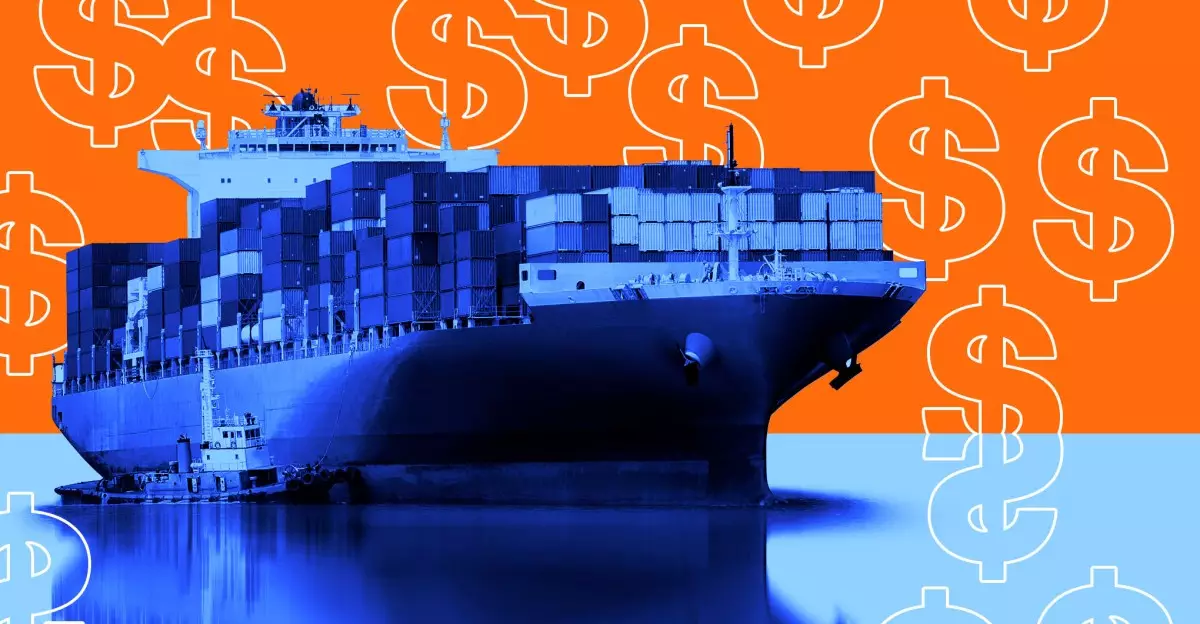The recent expiration of the de minimis exemption for packages arriving from China and Hong Kong is set to create seismic shifts in the landscape of online shopping for American consumers. On May 2, 2025, the envelope surrounding cross-border e-commerce ripped apart, leaving consumers and retailers grappling with the new reality of significantly higher tariffs on low-value packages. Prior to this pivotal moment, packages valued under $800 could enter the country duty-free, benefitting an astonishing 1.4 billion shipments last year alone. As the dust settles on the newly imposed fees — some as high as 90% of the package value — it is evident that online shopping will never be the same again.
The Implications for Consumers and Retailers
Imagine logging into your favorite online store and browsing items that once felt tantalizingly attainable, only to realize that the dream of cost-effective shopping has been curtailed. For retailers like Shein and Temu, which have thrived on direct shipping methodologies rooted in the existing de minimis rule, increased costs pose a threat to their operational models. The result is twofold: consumers face a sharp increase in prices, while retailers, if unable to absorb costs or renegotiate their shipping models, may see profits plummet. The consequence? A tightening of the digital marketplace landscape that limits choices for American shoppers.
Unbeknownst to many, this transition to a tariff-laden environment is not merely an administrative upheaval, as it has far-reaching implications on the behavior patterns of consumers. The unique allure of low-value cross-border shopping was a game-changer for U.S. consumers, particularly those on a budget, who could access everything from fashion to electronics with a few clicks. The new fees can significantly deter vibrant online shopping culture, steering consumers toward domestic alternatives that may not satisfy their craving for international goods.
The Chaotic Rollout of the Exemption’s End
When the de minimis exemption was abruptly paused earlier this year, chaos erupted. The postal system struggled to adapt to the sudden onslaught of changes. The U.S. Postal Service (USPS) even issued a temporary halt on all shipments from China and Hong Kong before reversing that decision amid a flood of public criticism. This chaotic rollout underscores the challenges of processing cross-border goods in a fractious regulatory environment. Is the U.S. prepared for the avalanche of packages that will now be existing within a more complicated tariff structure?
Critics of the Trump administration’s tariff policies raise pointed questions regarding both the practicality and efficacy of these new regulations. The intention may be to enhance revenue collection and curb illicit materials like synthetic opioids; however, one cannot overlook the irony that the bureaucratic complexity may inadvertently create gaps for illegal goods to slip through the cracks.
The Financial Toll of Tariff Structures
One startling statistic worth noting is that processing the de minimis packages under the new regime could cost the U.S. an estimated $3.2 billion annually. This figure not only highlights the financial burden placed on government agencies but also raises red flags about the long-term sustainability of such a system. The uncertainty surrounding how Customs and Border Protection (CBP) will manage the tidal wave of individual packages further exacerbates concerns. Will all low-value packages require formal entry, necessitating documentation and increasing delays for consumers? This bureaucratic barrier stands to dissuade a significant portion of the shopping populace who value speed and convenience.
Once the new tariff policies are fully operational, the knock-on effect is likely to be felt throughout the shopping ecosystem. Retailers may react by raising prices or limiting selections, while some consumers may simply abandon their online shopping habits in frustration, leading to reduced overall competition and variety.
The Way Forward: Strategies for Adaptation
As the landscape evolves, it will be crucial for retailers and consumers alike to adapt to the new realities of tariffs. For businesses that depend on low-cost international shipping, that may mean reevaluating their logistics and finding new efficiencies to mitigate higher costs. For shoppers, it requires a reconsideration of purchasing habits, with an emphasis on supporting local and domestic businesses who might not suffer the same tariff pressures.
The new tariffs may act as a double-edged sword; while they aim to protect American interests, they could inadvertently shift consumer behavior toward local shopping. However, the crux of the problem lies not in simply adapting to change but navigating a new environment riddled with unforeseen consequences. The American consumer’s love affair with affordable online shopping faces its greatest challenge yet, and its future remains precarious amidst the evolving trade landscape.


Leave a Reply